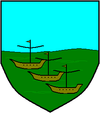Waterford
| Waterford Port Láirge |
|||
|---|---|---|---|
 |
|||
|
|||
| Motto: Urbs Intacta Manet Waterfordia (Latin) "Waterford remains the untaken city" |
|||
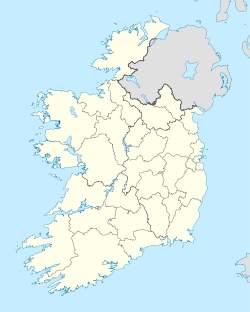 Waterford
|
|||
| Coordinates: | |||
| Country | |||
| Province | Munster | ||
| County | Waterford | ||
| Founded | 914 A.D. | ||
| Government | |||
| - Mayor | Mary Roche | ||
| Area | |||
| - City | 41.58 km2 (16.1 sq mi) | ||
| Population (2006) | |||
| - City | 45,748 | ||
| - Urban | 49,213 | ||
| Time zone | WET (UTC0) | ||
| - Summer (DST) | IST (UTC+1) | ||
| Area code(s) | 051 | ||
| Car plates | W | ||
| Website | www.waterfordcity.ie | ||
Waterford (from Old Norse: Veðrafjǫrðr/Vedrafjord meaning "ram fjord" or "windy fjord"—Irish: Port Láirge meaning "Lárag's port")[1] is the fifth largest city in Ireland, and the largest city in the South-East of the country. Founded in 914 AD by the Vikings, it is the country's oldest city.[2] The population of the city in 2006 was 49,213; of which 45,748 lived within the city limits, and 3,465 lived in the suburbs in County Kilkenny.[3] The city is situated at the head of Waterford Harbour (Irish: Loch Dá Chaoch or Cuan Phort Láirge).[2] The city motto Urbs Intacta Manet Waterfordia ("Waterford remains the untaken city") was granted by King Henry VII of England in 1497 after Waterford refused to recognise the claims of the pretenders Lambert Simnel and Perkin Warbeck to the English throne.[2] Waterford was subjected to two sieges in 1649 and 1650, during the Cromwellian conquest of Ireland. It withstood the first siege but surrendered during the second siege to Henry Ireton on 6 August 1650.[4][5]
Reginald's Tower is the oldest urban civic building in Ireland, and the oldest monument to retain its Viking name. To this day, it remains Waterford's most recognisable landmark. It is believed to be the first building in Ireland to use mortar. The River Suir, which flows through Waterford City, has provided a basis for the city's long maritime history. The place downriver from Waterford where the Nore and the Barrow join the River Suir is known in Irish as Cumar na dTrí Uisce ("The confluence of the three waters"). Waterford Port has been one of Ireland's major ports for over a millennium. In the 19th century shipbuilding was a major industry. The owners of the Neptune Shipyard, the Malcomson family, built and operated the largest fleet of iron steamers in the world between the mid-1850s and the late-1860s, including five trans-Atlantic passenger liners.[1]
Today, Waterford is known for Waterford Crystal, a legacy of the city's former glass making industry. Glass, or crystal, was manufactured in the city from 1783 until early 2009, when the factory there was shut down after the receivership of Waterford Wedgwood plc.[6] Waterford is the sister city of St. John's, Newfoundland and Labrador and Rochester, New York.
Contents |
History
Main article – History of Waterford
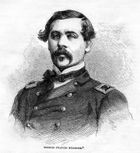

Viking raiders first established a settlement at Waterford in 853. Waterford and all the other longphorts were vacated in 902, the Vikings having been driven out by the native Irish. The Vikings re-established themselves in Ireland at Waterford in 914 and built what would be Ireland's first city. A list of the city's rulers from this date to the mayors of the present day can be found in Rulers of Waterford. Among the most prominent kings of Waterford was Ivar of Waterford.
In 1167, Diarmuid MacMorrough, King of Leinster, failed in an attempt to take Waterford. He returned in 1170 with Norman mercenaries under Richard de Clare, 2nd Earl of Pembroke (Strongbow); together they besieged and took Waterford after a desperate defence. This was the introduction of the Anglo-Normans into Ireland. In 1171, Henry II of England landed at Waterford. Waterford and then Dublin were declared royal cities, Dublin was declared capital of Ireland.
| Historical populations | ||
|---|---|---|
| Year | Pop. | %± |
| 1659 | 4,088 | — |
| 1821 | 261,865 | 6305.7% |
| 1831 | 304,468 | 16.3% |
| 1841 | 312,956 | 2.8% |
| 1851 | 255,661 | −18.3% |
| 1861 | 238,500 | −6.7% |
| 1871 | 215,766 | −9.5% |
| 1881 | 197,719 | −8.4% |
| 1891 | 171,401 | −13.3% |
| 1901 | 150,567 | −12.2% |
| 1911 | 142,665 | −5.2% |
| 1926 | 132,792 | −6.9% |
| 1937 | 127,586 | −3.9% |
| 1951 | 132,082 | 3.5% |
| 1961 | 133,919 | 1.4% |
| 1966 | 136,040 | 1.6% |
| 1971 | 139,073 | 2.2% |
| 1981 | 150,729 | 8.4% |
| 1991 | 156,284 | 3.7% |
| 2001 | 164,235 | 5.1% |
| [7][8][9][10][11][12] | ||
Throughout the medieval period, Waterford was Ireland's second city after Dublin. In the 15th century Waterford repelled two pretenders to the English throne: Lambert Simnel and Perkin Warbeck. As a result, King Henry VII gave the city its motto: Urbs Intacta Manet Waterfordia (Waterford remains the untaken city).
After the Protestant Reformation, Waterford remained a Catholic city and participated in the confederation of Kilkenny – an independent Catholic government from 1642 to 1649. This was ended abruptly by Oliver Cromwell, who brought the country back under English rule; his nephew Henry Ireton finally took Waterford in 1650 after a major siege.[13]
The 18th century was a period of huge prosperity for Waterford. Most of the city's best architecture appeared during this time. In the 19th century, great industries such as glass making and ship building thrived in the city.
In the early 1800s, Waterford City was deemed vulnerable and the British government erected three Martello towers on the Hook Peninsula to reinforce the existing Fort at Duncannon.
The city was represented in the Parliament of the United Kingdom from 1891 to 1918 by John Redmond MP, leader (from January 1900) of the Irish Parliamentary Party. Redmond, then leader of the pro-Parnell faction of the party, defeated David Sheehy in 1891. In 1911, Br. Jerome Foley, Br. Dunstan Drumm and Br. Leopold Loughran left Waterford for Malvern, Australia. Here, they founded a Catholic college which is still in existence today.[14] In July 1922, Waterford was the scene of fighting between Irish Free State and Irish Republican troops during the Irish Civil War.
Local government
Waterford City has 15 elected representatives (councillors) who sit on Waterford City Council. The city is divided into 3 electoral areas and residents in these areas are restricted to voting for candidates located in their ward for local elections. The office of the Mayor of Waterford was established 1377. A mayor is then elected by the councillors every year, and there is no limit to the number of terms an individual may serve. Mary O'Halloran who was mayor during 2007–2008 was the first woman to hold the post. The current mayor is Mary Roche.
For general elections, the city is part of the Waterford constituency, which covers the whole county and has been allocated four seats in Dáil Éireann. There are no such ward restrictions for these elections and voters are entitled to vote for any candidate throughout the city and county.
Climate
The climate of Waterford is like the rest of Ireland. It is mild and changeable with abundant rainfall and a lack of temperature extremes. Waterford is often referred to as the Sunny Southeast. The hottest months of the year are June, July and August with temperatures of around 19 - 21 degrees. Waterford is also one of the cities with the most sunshine in Ireland. Waterford gets rainfall all year round and the wettest months are October, November, December and January.
| Climate data for Waterford | |||||||||||||
|---|---|---|---|---|---|---|---|---|---|---|---|---|---|
| Month | Jan | Feb | Mar | Apr | May | Jun | Jul | Aug | Sep | Oct | Nov | Dec | Year |
| Average high °C (°F) | 8 (46) |
8 (46) |
10 (50) |
13 (55) |
16 (61) |
18 (64) |
20 (68) |
20 (68) |
18 (64) |
14 (57) |
10 (50) |
8 (46) |
13.6 (56.5) |
| Average low °C (°F) | 3 (37) |
3 (37) |
4 (39) |
5 (41) |
7 (45) |
10 (50) |
12 (54) |
12 (54) |
10 (50) |
7 (45) |
5 (41) |
4 (39) |
6.8 (44.3) |
| Precipitation mm (inches) | 53.4 (2.102) |
42.9 (1.689) |
38.4 (1.512) |
39.8 (1.567) |
34.0 (1.339) |
37.2 (1.465) |
33.8 (1.331) |
42.2 (1.661) |
43.3 (1.705) |
63.5 (2.5) |
50.7 (1.996) |
50.3 (1.98) |
529.5 (20.846) |
| Source: MSN Weather | |||||||||||||
Culture
Literature
Poet Seán Dunne was born in Waterford in 1956 and grew up in St John's Park. He attended Mount Sion CBS in Barrack Street and wrote with affection of the city in his memoir "My Father's House".
French Poet Laetitia Marie Wyse Bonaparte was born in 1831 in Waterford
Museums
Waterford Museum of Treasures, in the Granary on Merchant's Quay, is the city's foremost museum, housing a collection spanning over 1,000 years of the city's history.[15] Reginald's Tower, the oldest urban civic building in the country, is situated on the Quays/The Mall, in Waterford. It has performed numerous functions over the years and today is a civic museum. A new museum at Mount Sion (Barrack Street) is dedicated to the story of Brother Edmund Ignatius Rice and the history of the Christian Brothers and Presentation Brothers. Along with the museum there is a café and a new chapel. The new museum was designed by Janvs Design[16]
Art
The Waterford Municipal Art Gallery has been housed in Greyfriars since 2001. It is the permanent home for the Municipal Art Collection, "A Gem Among Municipal Collections", over 200 paintings by Irish and International artists, including pieces from renowned artists such as Jack B Yeats, Paul Henry, Charles Lamb and Louis Le Brocquy. Garter Lane Arts Centre is located in two separate restored buildings on O'Connell Street. A new contemporary gallery called Soma opened in 2009 on the Mall.
Theatre

The Theatre Royal,[17] on The Mall, was built in 1876, as part of a remodelled section of City Hall. It is a U-shaped, Victorian theatre, seating about 600 people.
Garter Lane Arts Centre[18] is housed in two conserved 18th century buildings on O'Connell Street. Garter Lane Gallery, the 18th century townhouse of Samuel Barker contains the gallery and the Bausch & Lomb Dance Studio, and Garter Lane Theatre is based in the beautiful Quaker Meeting House, built in 1792. The theatre was renovated and restored in 2006 and now contains a 164 seat auditorium.
Waterford also has three theatre companies, Red Kettle, Spraoi and Waterford Youth Arts. Red Kettle[19] is a professional theatre company based in Waterford that regularly performs in Garter Lane Theatre. Spraoi[20] is a street theatre company based in Waterford. It produces the Spraoi festival, and has participated regularly in the Waterford and Dublin St. Patrick's day parades, often winning best float. In January 2005 the company staged its biggest and most prestigious production to date, "Awakening", the Opening Show for Cork 2005 European Capital of Culture. Waterford Youth Arts (WYA),[21] formerly known as Waterford Youth Drama, was established in August 1985. WYA has grown from the voluntary efforts of two individuals and 25 young people, to a fully structured youth arts organisation with a paid staff and 400 young people taking part each week.
Events
The Spraoi festival,[20] organised by the Spraoi theatre company, is a professional festival and street arts organisation held in Waterford during the summer each year. It attracts crowds in the region of anywhere up to 80,000 people.
The company is best known for producing and programming the annual Spraoi Festival which takes over the city centre of Waterford on the August Bank Holiday Weekend, and which now attracts audiences in excess of 80,000 people to the city. The Spraoi Festival concentrates on showcasing top quality national and international street art and world music..
The Waterford International Festival of Light Opera[22] is an annual event that has been held in the Theatre Royal since 1959.
The Tall Ships festival, held in Waterford in 2005, marked the start of the Tall Ships race of that year. The Suir river provided a perfect berthing location for the numerous tall ships that lined the north and south quays, for almost a week. The festival attracted in the region of 450,000 people to the city in what was the biggest event ever held in Waterford or the south east. On 27 March 2007, it was confirmed that Waterford will host the start of the Tall Ships race again in 2011. Starting from Waterford, Ireland the fleet will race to Greenock in Scotland, starting mid-late June 2011 (exact date to be confirmed).
There are two Arts Festivals of note in the city; The Imagine Arts Festival in October and The Fringe Arts Festival in September.
Cinema
Waterford city has two cinemas. The older of the two, now closed, was the five-screen Waterford Cineplex on Patrick St.,[23] which was the city's only cinema for many years. The other is the eight-screen Storm Cinema in the Railway Square complex.[24] Also, situated in Dungarvan is the SGC cinema. A second cinema in Waterford City is due to open in August 2011. It will be located near the old Waterford Crystal Factory. Waterford Film For All (WFFA)[25] is a non-profit film society whose aim is to offer an alternative to the cineplex experience in Waterford. WFFA conduct much of its activities on the Waterford Institute of Technology (WIT) campus.
Libraries
There are three public libraries in the city, all operated by Waterford City Council: Central Library, in Lady Lane; Ardkeen Library, in the Ardkeen shopping centre on the Dunmore Road; and Brown's Road Library, on Paddy Brown's Road. Central Library, or Waterford City Library, opened in 1905. It was the first of many Irish libraries funded by businessman Andrew Carnegie (Carnegie funded 2,509 libraries across the world). It was renovated in 2004 for its centenary.
Media
Broadcasting
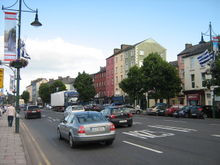
RTÉ's south eastern studio is located in the City Square shopping centre, in the city. The local correspondents are Damien Tiernan (South East Correspondent) and Helen McInerny (South East Reporter). Waterford Report[26] is a once weekly television programme on City Channel covering local news in Waterford. It is now presented by Mark Staunton. It is available only on cable and mmds from NTL (Channel 107). The programme is repeated twice every day. The service began on 1 November 2006, and broadcasts to homes across Waterford City and County. Previous presenters include: Aoibhin Fallon (WLR FM), Mary O'Neill and Janice Corrigan (Beat 102 103, WLR FM).
Waterford Local Radio (WLR FM) is available on 94.8FM on the Coast, 95.1FM in the County and on 97.5FM in Waterford City WLR FM is Waterford's local radio station. It serves a potential audience of 170,000 people, and 75% of all adults in Waterford tune in weekly. Beat 102-103 is a regional youth radio station broadcasting across the South East of Ireland, it is based at "The Broadcast Centre" in Ardkeen, along with sister station WLR FM. It serves a population of about 450,000, and in August 2006 it had a 49% share of the south east market.
The Munster Express is Waterford's only remaining broadsheet format newspaper. It has its office on the Quay in Waterford City and covers stories from across the city and county.
The Waterford News & Star is based on Michael Street in Waterford City. It covers Waterford city and county. It is now published in tabloid format.
Waterford Today is an advertising supported free newspaper. It is delivered to most homes in the Waterford city area and is also available in many shops across the east of the county. Its newly refurbished offices are at the Mayors Walk in the city.
The Munster Express, Waterford News and Star and Waterford Today are in the shops on Wednesdays. The Munster Express "Late Edition" comes out on Fridays.
Places of interest


The city of Waterford consists of various cultural quarters, the oldest of which is known as the Viking triangle. This is the part of the city surrounded by the original 10th century fortifications, which is triangular in shape with its apex at Reginald's tower. Though this was once the site of a thriving Viking city, the city centre has shifted to the west over the years, and it is now a quiet and tranquil area, dominated by narrow streets, medieval architecture, and civic spaces. Over the past decade, a number of restaurants have opened in High Street and Henrietta Street, taking advantage of the charming character of the area. Much of Waterford's impressive architecture is to be found in the Viking triangle.
In the 15th century, the city was enlarged with the building of an outer wall on the west side. Today Waterford retains more of its city walls than any other city in Ireland with the exception of Derry, whose walls were built much later. Tours of Waterford's city walls are conducted daily.

The Quay, once termed by historian Mark Girouard 'the noblest quay in Europe', is a mile long from Grattan Quay to Adelphi Quay, though Adelphi Quay is now a residential area. It is still a major focal point for Waterford, commercially and socially, and the face that Waterford presents to those traveling into the city from the north. Near Reginald's Tower is the William Vincent Wallace Plaza, a monument and amenity built around the time of the millennium that commemorates the Waterford born composer.
John Roberts Square is a pedestrianised area that is one of the main focal points of Waterford's modern day commercial centre. It was named after the city's most celebrated architect, John Roberts, and was formed from the junction of Barronstrand Street, Broad Street and George's Street. It is often referred to locally as Red Square, due to the red paving that was used when the area was first pedestrianised. A short distance to the east of John Roberts Square is Arundel Square, another square with a fine commercial tradition, which the City Square shopping centre opens onto.

Ballybricken, in the west, just outside the city walls, is thought to have been Waterford's Irishtown, a type of settlement that often formed outside Irish cities to house the Vikings and Irish that had been expelled during the Norman conquest of Ireland. Ballybricken is an inner city neighbourhood with a long tradition, centred around Ballybricken hill, which was a large, open market-square. Today it has been converted into a green, civic space, but the Bull Post, where livestock was once bought and sold, still stands as a remnant of the hill's past.
The Mall is a fine Georgian thoroughfare, built by the Wide Streets Commission in order to extend the city southwards. It contains some of the city's finest Georgian architecture. The People's Park, Waterford's largest and finest park, is located nearby.
Ferrybank in Co Waterford is Waterford's only suburb north of the river. It contains a village centre of its own. The local population is primarily natives of Kilkenny with a proportion from Waterford who in the majority have integrated. Waterford City Council have granted permission for a number of major retail developments in Ferrybank. One has been completed and the second is currently under construction and due to be completed in January 2009.
In April 2003 an important site combining a 5th century Iron Age and 9th century Viking settlement was discovered at Woodstown near the city, which appears to have been a Viking town that predates all such settlements in Ireland.[27]
Waterford Crystal is manufuctred in Waterford but in early 2009 the company moved it operations to Europe after denying the workforce their entitlements, some workers lost many thousands in pension rights etc. A new Waterford Crystal visitor centre opened on June 22, 2010. Tours are conducted daily. It is the biggest Waterford Crystal store in the world. While on the tour you can see how the glass is manufactured. The centre is open seven days a week.
Transport
Waterford is connected by rail, bus, road, air and sea. Waterford is connected with Cork, Dublin, Limerick, Rosslare Europort, Wexford and Dungarvan. The City has rail connection to Dublin and other towns in the South-East. Bus services operate through out the city centre and acoss the region. Waterford Airport is located 9 km outside the city centre.
Education
The city is served by 21 primary schools[28] and 9 secondary schools.[29]
There are two third level institutions in Waterford: Waterford Institute of Technology, which is currently being considered for university status[30] and the Waterford College of Further Education.[31] Waterford is the largest population centre and only city in the Republic of Ireland without a National University.
The Quaker co-educational boarding school, Newtown School is situated in Waterford, east of the city centre.
Waterpark College is a secondary school in the city of Waterford, Ireland. The school was established in 1892 on the banks of the River Suir as Waterfords' first classical school, and still provides a secondary education to boys from Waterford City, County and the surrounding area.
Sport
Soccer
Waterford United is a team in the League of Ireland First Division. Waterford United's origins are as Waterford Football Club which was formed in 1930 and joined the League of Ireland the same year. The Club which changed its name to United in 1982 played its games in the city's greyhound racing stadium at Kilcohan Park. At the end of the 1992/93 season, the Club were granted the use of the Regional Sports Centre, due to the absence of owning their own pitch. The Club has had mixed fortunes through its history, success peaking in a near decade spell of domination of the domestic game between 1965 and 1973 which led to games being played at European level against teams that included Manchester United and Celtic. The club's last trophy win was the First Division in 2003. Since then Waterford United has bounced between the two League of Ireland divisions changing managers frequently.
Successful Waterford born or raised football players include Jim Beglin, John O'Shea and Daryl Murphy. There is a common misconception that Stephen Hunt was born in Waterford but he was actually born in Co Laois to Waterford parents. He was however raised from a young age in the Rathgormack area of east Waterford along with his brother Noel Hunt.
GAA
Mount Sion GAA is a local Gaelic Athletic Association club. Other clubs include: Erin's Own GAA (Waterford), De La Salle, and Ballygunner GAA.
Skateboarding
The skate scene in Waterford has grown substantially in the past 15 years. Two skate parks have been built recently, one in Tramore and one in the Peoples Park.
Rowing
Waterford Boat Club is the oldest active sports club in Waterford established in 1878. Located on Scotch Quay the club has had great success in recent years with several national championships and numerous medals in Europe. Several Waterford rowers have been selected to row for Ireland recently.
Twinning
Waterford is twinned with the following places:
 St. John's, Newfoundland and Labrador, Canada
St. John's, Newfoundland and Labrador, Canada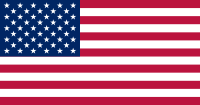 Rochester, New York, United States
Rochester, New York, United States Saint-Herblain, Pays de la Loire, France
Saint-Herblain, Pays de la Loire, France
See also
- Blaa – A doughy, white bread roll particular to Waterford City
- Deise – The colloquial term for the region
- John's River – A river that runs through Waterford City.
- List of towns and villages in Ireland
- List of Waterford people
- Little Island – An island within Waterford City.
- The People's Park – Waterford's largest park and green space.
- The Three Sisters: The River Barrow, River Nore and River Suir
- Waterford Crystal – world famous glassware factory
- Waterford, CT, a town of the same name on the Connecticut coast.
- Waterford Museum of Treasures – Museum for historical artifacts associated with Waterford city
- Woodstown – Early Viking Settlement discovered near Waterford in 2003, on the banks of the River Suir
General
- Official site – Waterford City Council
- Official site – Waterford County Council
- Port of Waterford
- South-East GDP 2002
- Waterford Chamber of Commerce
- Waterford Colloquialisms at Wiktionary
Media
- Munster Express newspaper
- Waterford Local Radio
- Waterford News & Star newspaper
- Waterford Today (free sheet)
Additional reading
- Shipbuilding in Waterford 1820–1882, by Bill Irish, ISBN 1 86985791 7
- History of Waterford, by Joseph Hansard, ISBN 0 9532022 0 8
References
- ↑ 1.0 1.1 Discover Waterford, by Eamon McEneaney (2001). (ISBN 0-86278-656-8)
- ↑ 2.0 2.1 2.2 http://www.waterfordcity.ie/city/history.htm
- ↑ Census 2006: Population classified by area – cso.ie
- ↑ A New History of Cromwell's Irish Campaign, by Philip McKeiver (2007). (ISBN 978-0-9554663-0-4)
- ↑ Discover Waterford, by Eamon McEneaney (2001). (ISBN 0-86278-656-8)
- ↑ USAtoday.com, but Reopens again in the Viking Quarter of Waterford City in June of 2010 after the intervention of Waterford City Council and Waterford Chamber of Commerce. Also included in the launch of Waterfords Viking Triangle with be the "undercroft" of The Bishops Palace, a Medieval escape route from the City, and the award winning Waterford Museum of Treasures.
- ↑ For 1653 and 1659 figures from Civil Survey Census of those years, Paper of Mr Hardinge to Royal Irish Academy March 14, 1865.
- ↑ Census for post 1821 figures.
- ↑ Histpop.org
- ↑ NISRA.gov
- ↑ Lee, JJ (1981). "On the accuracy of the Pre-famine Irish censuses". In Goldstrom, J. M.; Clarkson, L. A.. Irish Population, Economy, and Society: Essays in Honour of the Late K. H. Connell. Oxford, England: Clarendon Press.
- ↑ Mokyr, Joel; O Grada, Cormac (November). "New Developments in Irish Population History, 1700–1850". The Economic History Review 37 (4): 473–488. doi:10.1111/j.1468-0289.1984.tb00344.x. http://www3.interscience.wiley.com/journal/120035880/abstract.
- ↑ A New History of Cromwell's Irish Campaign, by Philip McKeiver (2007). (ISBN 978-0-9554663-0-4)
- ↑ Steve Stefanopolous, St. Joseph's Malvern, 2003. Held by the De La Salle College Malvern Archives
- ↑ Waterford Treasures Official Site
- ↑ Janvs.com
- ↑ The Theatre Royal Official Homepage
- ↑ The Garter Lane Arts Centre Official Homepage
- ↑ Red Kettle Official Homepage
- ↑ 20.0 20.1 Spraoi Official Homepage
- ↑ Waterford Youth Arts Official Homepage
- ↑ Waterford International Festival Of Light Opera Official Homepage
- ↑ Waterford Cineplex page at Go Ireland
- ↑ Storm Cinemas – Waterford
- ↑ WFFA – Waterford Film For All
- ↑ Waterford Reports Page on City.ie
- ↑ 9th Century Settlement found at Woodstown – vikingwaterford.com
- ↑ Primary Schools in Waterford City- Education Ireland
- ↑ Secondary Schools in Waterford City- Education Ireland
- ↑ Waterford Institute Of Technology Official Homepage
- ↑ Waterford College of Further Education Official Homepage
|
|||||||||||||||||||||||||||||||||||||||||||||||||||||
|
|||||||||||
|
|||||||||||

